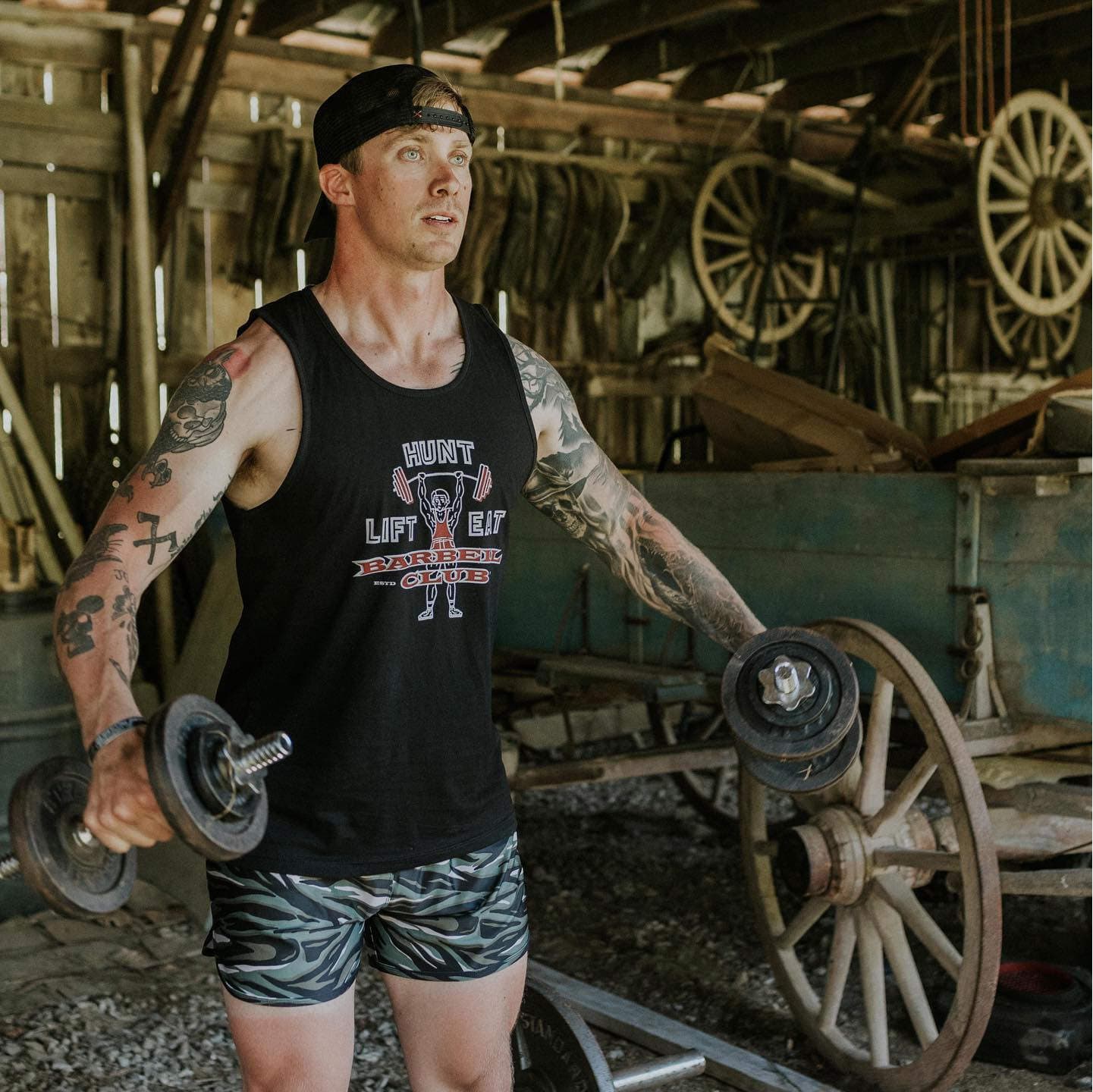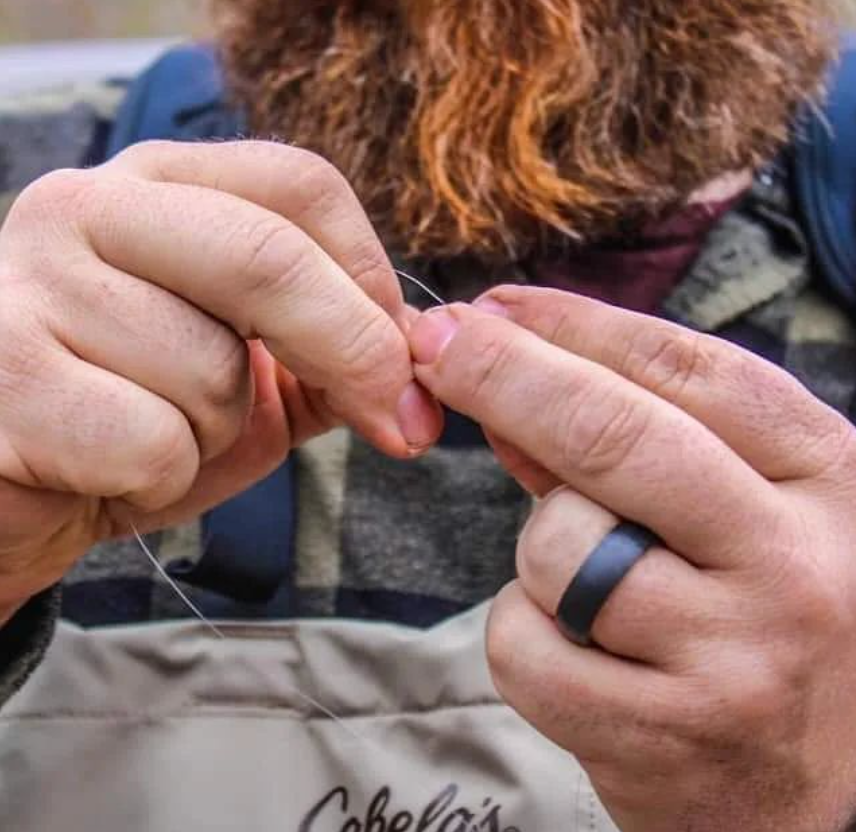“Hello, my name is David Stark and I’m an addict. It has been seven seconds since I last thought about fly fishing.”
So, you’ve watched ‘A River Runs Through It’ have you? Fly fishing looks beautiful and majestic? Like ballroom dancing, on a rock cobbled river bank, swaying to and from to the rhythm of the water rushing and the windblown cottonwood tufts flitting about? Well, I’d say, if you answered yes to at least the latter two questions, you’re on the right track. If, obsession be the track you are looking for. Yessir! Prepare to have your life consumed by rabbit fur, chicken feathers and deer hair. You will dream of the perfect cast. Salivate at the thought of the dragless drift, and stare at every water filled ditch wondering if it could hold a fish. Am I being overdramatic? I can assure you; I am not.
You see there are two and only two types of fishermen. According to me they are: those who don’t care for fly fishing, also known as those who are wrong and then there are the rest of us poor, hapless souls that pine for tight loops, tight lines and tugs from our estuarine counterparts. According to John Gierach, the two types are: “the guys in your party and the assholes." Both are true and either way we can’t help it. We are addicts.
Growing up in Oklahoma fly fishing isn’t something that is part of everyday conversation. One is more likely to hear about trotlines in rivers, jug lines on the lake or flippin’ H&H spinners in your favorite pond. However, we are not without opportunities to come in contact with fly fishing. There are a few areas that have regular stockings of trout, which is what most people attribute to fly fishing where most of us probably got our first exposure and a few guides to help facilitate those opportunities, if you so desire. But as you venture into the art, you learn that nearly every species of water dweller is pursued on the fly. I’m talking Bluegill all the way to Tarpon! There are folks poling skiffs through Louisiana marshlands chasing Bull Reds, wet wading coastal flats for Permit and even swinging hookless “flies” in rivers for Gar. I am telling you the possibilities are virtually endless! Hell, I dadgum nearly caught a bird in my yard! I’ll explain that later. Without further ramble, let’s get into it. Just how does one get into fly fishing?
I have chronicled my rise to obsession in a previous article that can be found on huntlifteat.com titled ‘Thank the Lord for Oil Changes: My Foray into Fly Fishing’. Just in case you feel so compelled to hop over there and give it a read and a share and perhaps buy a t-shirt, hat, koozie and a “Vegan’s Skip Leg Day” sticker. But let’s get a little more into the weeds about it, shall we?
Just like anything else, there is an overabundance of information on the internet. There are days’ worth of videos, from multiple companies and individuals, giving instruction that we all have free access to, all the livelong day. These are great tools that are very well crafted and mostly distributed by masters of the craft. They are also very overwhelming, mostly due to the sheer amount of them and almost everyone seems to have a slight modification to how they think things should be done. There is also the issue of what you are looking for. Stick, religiously, to the basics! Don’t go trying to double haul or Belgian cast 2 weeks into this thing. This isn’t walking and chewing gum. This is ballet while painting a self-portrait with a broom, mentally trying to convert Thrash Metal into Kenny G, and chewing gum.
Just as accessible and probably more confusing are the books. I imagine there are probably more books than videos, I only assume because the written word has been around a smidge longer than video. But there could be a good argument that whoever built the pyramids had video capabilities. Keep in mind that I am strictly talking about beginning casting here. Books prove difficult for most to learn how to perform a physical, cerebral act of this ilk. The books regarding reading streams, tying flies, matching hatches, entomology, hydrology, tailwaters, freestones and all the how to in between are fantastic! You have to be able to cast a fly before you can present it. Presentation is done once you’ve laid the cast down. Savvy? But, you gotta get it there. You’re going from baby booties to ballet slippers.
Your best option, in my opinion, would be to find someone who can help guide you into it.
They will most likely have enough gear, because all fly fishermen need 3 different setups for every type of scenario they might encounter and all the gadgets to accompany them. Gadgets, MYLANTA, the gadgets! How we ever made it on a stream without a hooky-doo to hold our wooly bugger, yes that is a fly, while we tie it on, I… Will... Never... Know… I digress. A good friend that is already somewhat faceted in the art will be more than happy to teach and let you tag along. Trust me, every fisherman is looking for a fishing buddy. If for no other reason than to drag you out of the river when you have ultimately been baptized and filled your waders, huh Mike? Let them teach you. And I mean LET them teach you. Like all art forms this takes patience and focus, which demands it to be cerebral. The art is frustrating at first but give it time and I promise you won’t regret it. Especially on the day that you realize that your jaw is no longer clinched and you haven’t thought about the roof that needs fixed or the car payment or the idiot down the road that insists on being just that. Instead, you have been standing hip deep in a river, watching your rod tip, stopping it at 10 and 2 (think of a clock), slow fluid motions with just a little flick at the end of your forward and back to form that nice tight loop, counting in rhythm but not great rhythm, huh Mike? The easiest way to explain the “flick” or “whip” is to imagine pulling a trigger with your pointer finger just as you stop your back cast at 2 o'clock and to press down with your thumb at the end of your forward cast at 10 o’clock. Let your back cast begin to straighten out before making that last forward cast that you lay delicately on the water’s surface in the perfect seam where the fast-moving water meets the slower current, right where that fish should be holding so he doesn’t have to expend too many calories working to ambush his next meal. Exhale. Goos Frah Bah.
If you’re like me and don’t have anyone around to teach you the basics, take you to the water or let you borrow some gear, then it is time to purchase - A Fly Rod of Your Own. I highlighted that because it is the name of a great book by one of my favorite fly-fishing authors Mr. John Gierach, by the way. This is yet another seemingly insurmountable feat that will make your head spin like a blood stream full of Canadian Mist, huh Mike? There are rods and reels that range well into 4 figures, separately. While wonderful, beautiful, and probably worth most of those pennies, they are not necessary to catch fish. And, at this particular juncture you still think catching fish is the objective and that is fine but, you will soon learn otherwise and you will be all the better for it. However, don’t go super cheap. The sixty-dollar outfit with flies and “everything needed to get you fishing” waves like a broomstick after about 30 minutes and your arms will be as disproportionate as those that belong to professional bull riders. For less than two-hundred smackers, greenbacks, simoleons, clams, doll hairs, or dollars you can have a pretty good setup that will cast and fish just fine.
Now you’re ready to get out in the yard and beat your grass half to death. Get a small piece of yarn and tie it to the end of a three-foot piece of monofilament and hack away! If you use a small red piece of yarn and work on casting under trees, occasionally, a Robin may mistake it for a worm! Put some hula hoops or small targets out and work on accuracy. There are a few mechanics to note here. Everything I lined above regarding timing, rod tip and line control all factor with just a couple more, very important basics. Let’s start with your grip. There are two ways to grip a fly rod. You can hold the handle firmly seated in all four of your fingers, much like you would hold a baseball bat with your thumb lying on top, pointed forward, pressing into the grip, or, wrap your thumb around and place your pointer finger firmly on top; basically, like you are pointing your finger where you want your cast to go. Now let’s talk about the casting arm. You can extend your elbow out parallel to your body as if it is sitting on a shelf, working your shoulder in a comfortable range of motion and keeping your wrist from breaking over as much as possible, or, bring the elbow to your side like you’re trapping a book under it working the same range of motion and same minor wrist action. To start out, if needed, to help with the break over of your wrist you can wear a long sleeve shirt and tuck the butt end of your rod into your sleeve. Now onto the rod position. Different scenarios are going to call for different types of casts, and there are several, as well as rod positions. You can go with your rod straight up, slightly canted away, or full sidearm. I learned recently, during some instruction that for most people who have been conventional fishing their whole life that the thumb on top, book under the arm and side-arm cast are the best places to start and then they can sus out the other strokes as time and circumstances dictate. Put all of this together along with the trigger pull, thumb pressure and rod tip and 10 and 2, I mentioned earlier, watch some videos, start gathering some understanding of how surface tension works on your line (grass does a decent enough job of mimicking water surface tension) and once you feel like you have gotten the hang of your pick up and lay down, start letting a little line out for some distance. Be sure that you are only releasing line in your forward cast. If you are letting slack into your back cast your line will pile up and land right at your rod tip and eventually be full of knots. Keep the back cast tension on your line with your off hand and keep that hand about chest high. Most of your streams are going to necessitate short casts and a lot of your fish are going to be caught in a window of fifteen to twenty feet, or so has been my experience. Spend some time in that range and get comfortable, or not if you’re like me and just have to get in some water. Most importantly, get frustrated as all hell and have fun with the process.
Once that’s done, hop back on the YouTube or grab one of the many available books and learn how to tie a few essential knots. There are knots’o’plenty but a few will get you going, such as a triple surgeon’s knot, blood knot, perfection loop, clinch knot (or as I like to call it the 6 wraps and one for Xander knot), improved clinch knot, nail knot and the loop knot. Some are more difficult than others and some you have tied before if you have any prior fishing experience. Get some small twine and go to town. Disclaimer: I have tied at least a thousand and one blood knots and still suck at it.
Now you’ll want to learn some minor entomology. That there is a fancy word for bug knowledge and again, you don’t need to know every bug out there or their scientific/Latin name or root. Just a few bugs and preferably those local to you will suffice. Yet again, there are books upon books about insects if you so choose to be able to identify them exactly but simply knowing how and where to look and finding a good imitation will work just fine. Plus, it’s fun getting out in the water and flipping rocks or shaking the bushes along the banks to see what sustains your local fish population. The same goes for baitfish. Baitfish such as minnows, are vital to your fish population and your success as an angler.

We call this matching the hatch. You want to imitate whatever food substance there is to have the highest chances for success. There are those moments where just about anything buzzing across the nose of a fish will irritate it enough to strike but, more often than not picking from their menu is the best bet. Or, you can simply buzz your local fly shop, if you’re lucky enough to have one, and most of the time they are more than happy to fill you in on what has been producing as of late. But I still highly recommend learning the bugs and other critters. Not only is it fun and gets you more engaged with the process but you will look super cool to your kids and friends when they pull something from under a rock and you say “oh yeah, that is a Hellgrammite”. You will be a veritable creepy-crawly rockstar!
You’re going to do the same for flies. Just do a little research and wade through the minutiae. Flies, in my opinion, are the absolute most daunting for someone that has zero experience. There are a thousand and one variations and ways to imitate bugs and again everyone has their own idea on what works best and everyone who ties has one that will out fish everything on God’s green. The first time I ever had anyone agree was just recently when I took a couple of classes, one with Pat Dorsey and one with Tom Rosenbauer and they both shared the same sentiment regarding the efficacy of Parachute Adams sizes 12 to 24 and Pheasant Tail Nymphs in 16 to 24. Consequently, and strangely, those are my two favorite flies so I must be a legend in the making!
Lastly, learn to read water! The waters surface tells a story of what lies beneath. Which gives away the fishies dirty little secret of their hidey hole. You have four main types of features; riffles, runs, eddy’s and pools. A riffle is a shallow stretch of water that is typically rocky which can cause the water to be rapid and turbulent. A run will be relatively straight and swift staying consistent and smooth throughout due to the lack of obstacles or grade changes. A pool is what you most likely already think it is with deep slower moving water. An eddy is caused by an obstruction underwater and will run counter to the main current creating a swirling effect, like a toilet bowl. Fish will setup in an eddy due to the calm nature that allows them to relax and the eddy traps food in its maelstrom, making for easy pickings. A run will often occur between a riffle and a pool. With its more consistent current fish will feed in a run where food travels through, out of the riffle. They will lie along the edge or seam where water slows and its easier to stay without using too much energy. These can occur at a tail out into a pool and also around rocks. Fish will also setup in front of rocks where the water breaks and it is easier to hold as well. If your run is long and swift often times the fish will hold up closer to the banks where the water is slower and will not venture too far out in to the heavier current. In the pools they will often gather up in the deeper holes. In all of these instances, unless the fish are feeding on the surface, depth of your fly is the most important next to the fly itself.

You have to get the fly into their feeding zone and that requires you to cast several feet upriver so to give the fly time to get down in their zone. This is the case in all water features, especially with trout. Bass are not as line skittish as trout. So, casting among them isn’t as detrimental to your pursuit. As with everything else there are books and videos galore on reading water and recognizing a prime lie.
Hopefully you take my advice for what it’s worth. My aim here is to educate, entertain and maybe even engage your senses a little. As well, it is my undying desire that you heed what minor effect I may have on your soul and relinquish yourself to the call. Because, at the end of the day our main goal is to get out to enjoy the world and I emphatically implore you to allow the great out-of-doors to consume you and take every opportunity to overdose on her power, beauty and grace. Tight Lines!
-Poppa Stark
Recommended Reading
The Bug Book: A Fly Fisher’s Guide to Trout Stream Insects by Paul Weamer
Reading Trout Water by Dave Hughes
The Little Red Book of Fly Fishing by Charlie Meyers and Kirk Deeter
Anything by John Gierach and Steve Ramirez









Leave a comment
This site is protected by hCaptcha and the hCaptcha Privacy Policy and Terms of Service apply.